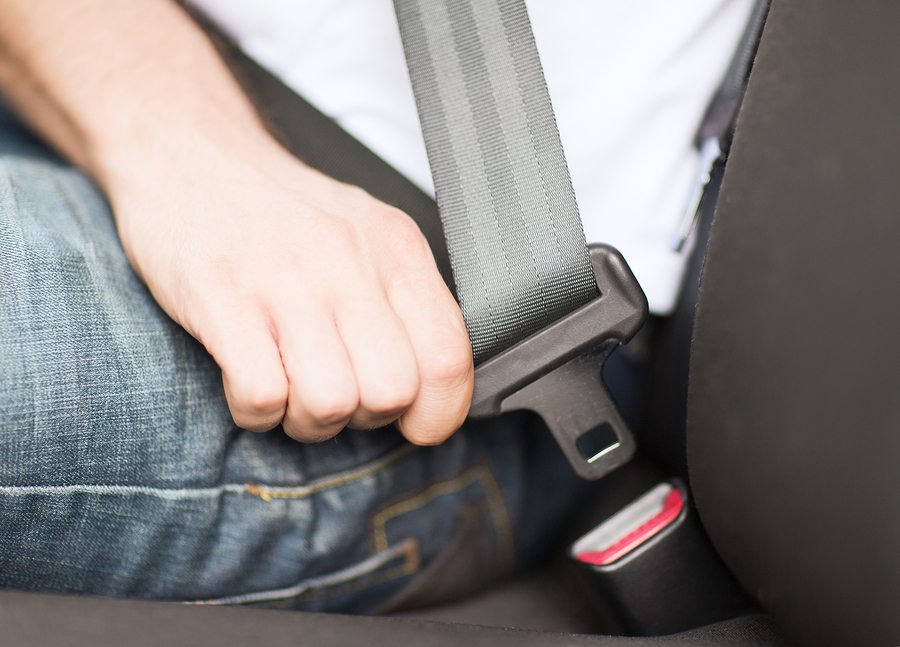Whiplash, a soft-tissue injury common in sports and car accidents, occurs when tendons, muscles, and ligaments in the neck are quickly stretched past their normal range of motion. These types of injuries can easily result when a driver slams on their brakes or is rear-ended at high speeds – but is it possible to sustain a whiplash injury from a low-speed impact? In this article, car accident injury lawyer Brent Wieand will go over some common symptoms and warning signs of whiplash, and examine whether whiplash can be caused by minor car accidents with low acceleration and deceleration forces.
The most obvious warning sign of a whiplash injury is neck pain and stiffness, with onset generally beginning within 24 to 48 hours of the accident. Injured muscles naturally stiffen to minimize the risk of further damage, leading to rigidity and inflexibility. You may not be able to turn your head as far as you normally can, or have trouble tilting your head up and down. Depending on the severity of the injury, the pain and stiffness may be confined to your neck, or extend all the way down through your shoulders, upper arms, and back.

Medical professionals offer some common tips to reduce the pain and swelling by placing a cold ice pack on the injured area for about 10 or 20 minutes every few hours. Avoiding unnecessary physical strain during this delicate recovery period. Taking breaks from exercise and heavy lifting, and trying to hold your neck as still as you possibly can. To give your neck extra support, you can buy a temporary foam brace from a drug store. They usually cost about $15 to $25.
Other symptoms of whiplash include:
If you’re suffering from any of these symptoms, you should see a doctor as soon as possible. Without proper treatment at the outset, your whiplash could worsen with time. You should also see a physician to rule out the possibility that you suffered from a more serious injury, such as a cervical (vertebral) fracture, which is in need of immediate medical attention, as a personal injury lawyer in Philadelphia, PA.
While seat belts secure the torso, the head and neck can still move freely during an accident. When this motion is too sudden and forceful, the result is “whiplash,” a colloquialism describing neck injuries caused by hyperextension (head/neck movement backward) and hyperflexion (head/neck movement forward). Whiplash can be caused by many types of car accidents, but is usually associated with a rear-end collision.
As a soft tissue injury, whiplash – and the considerable, even disabling pain it can cause – is notoriously difficult to diagnose. While medical imaging is recommended to exclude the possibility of other conditions, whiplash generally doesn’t show up on x-rays, MRI scans (magnetic resonance imagining), or CT scans (computed tomography). This brings up an important question for insurance companies in the aftermath of an accident: is it really possible to sustain a whiplash injury from a low-speed collision? Or should such reports be treated as fraud?
Researchers have been pursuing the answers to these questions for decades. In 1997, European researchers assessed 19 volunteers of both genders, all between the ages of 26 and 47, to determine whether speed changes between 10 and 15 km/h, or about six and nine MPH, were capable of causing whiplash injuries. The researchers found that, while none of the study participants were injured upon “physical examinations, computerized motion analyses, or… MRI examinations,” one of the participants did suffer a mild, temporary reduction in the flexibility of his cervical spine (the portion of the spine contained in the neck). The study was published in European Spine Journal.

More recently, a 2008 study published in Annals of Advances in Automotive Medicine, which examined more than 100 “minor rear-aligned crashes between passenger vehicles” with speed changes “less than or equal to [9.3 MPH],” found that within five weeks, over 113 passengers were diagnosed with 427 injuries – between 29.7% and 40.6% of which were cervical, depending on which type of diagnostic system was applied to patients. (Researchers were, however, surprised to find that – contrary to their hypothesis – whiplash injuries were actually less prevalent than non-whiplash injuries.) Interestingly, no occupants of striking vehicles reported injury or discomfort – only the occupants of the vehicles which were struck.
The takeaway message for car accident victims is that, regardless of what insurance companies might try to tell you, low-speed collisions do have the potential to result in whiplash injuries with lasting symptoms. If your insurance company refuses to take your claim seriously and provide adequate coverage, you should consult with a personal injury lawyer for help getting the compensation you deserve. Depending on the circumstances, you may be entitled to compensation for current and future medical bills and lost income. To start reviewing your legal options in a free and private consultation, call Delaware County car accident lawyer Brent Wieand at (888) 789-3161.
***Disclaimer: This article is for informational purposes. It is not legal advice and should not be used as legal advice. Brent’s law office is located in Philadelphia, PA, and serves clients throughout Pennsylvania and New Jersey.***